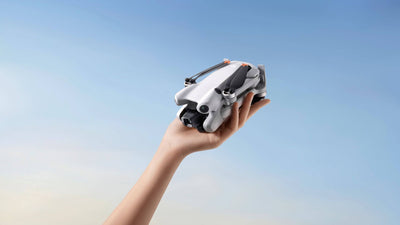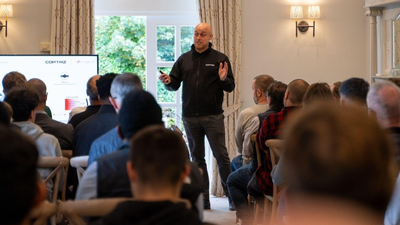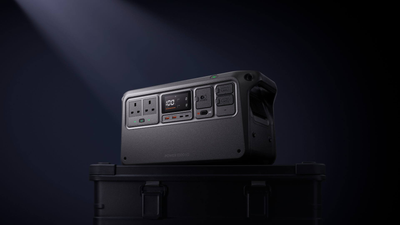How Hyundai E&C Uses DJI Dock 3 To Automate Construction Inspections In South Korea
- by Stefan Gandhi
In one of South Korea’s most ambitious infrastructure undertakings, Hyundai Engineering & Construction (Hyundai E&C) is setting a new benchmark for smart construction management. At the heart of their operation lies the DJI Dock 3, an automated drone system designed to capture, analyse and deliver real-time data without human intervention. This technology is transforming how large-scale construction sites are monitored, planned and managed.
A Groundbreaking Infrastructure Project
The Namyangju Wangsuk National Route 47 Relocation and Underground Project is unlike any other in South Korea. With a total construction cost of around one trillion KRW, it is the nation’s first four-layer underground tunnel system, consisting of an underpass on the upper level and a 6.4-kilometre tunnel below. Managing such a complex project requires precise coordination between multiple teams overseeing safety, scheduling, quality control and progress tracking.
Before adopting automated drone systems, Hyundai E&C relied on manual drone operations. A single staff member had to manage every aspect of the process: charging, transporting, flying and processing the data. This manual approach was time-intensive and limited the ability to collect and analyse site data consistently.
The Shift To Automation
When the DJI Dock 3 was introduced, it brought a step-change in efficiency. The Dock enables fully automated drone operations, from take-off and flight to landing and charging. Once programmed, it can carry out missions autonomously, capturing aerial imagery and 3D mapping data at regular intervals.
At the Namyangju Wangsuk site, the system is used to collect aerial data every two weeks. This data is uploaded automatically to the cloud and integrated with the AngelsWing and DJI FlightHub 2 platforms. As a result, teams can view progress updates instantly, without needing to be on-site.
The automation of drone operations has reduced the need for repeated manual flights and in-person meetings. Project leaders now have immediate access to visual updates, allowing for faster decision-making and improved collaboration across departments.
Smarter Data For Smarter Construction
One of the most significant benefits of this approach is the transition from 2D to 3D data analysis. Previously, construction quantities and measurements were calculated manually using 2D CAD drawings. Now, the drone-generated 3D models allow Hyundai E&C to measure volumes directly, compare them with design plans and check for any deviations.
The AngelsWing platform enhances this process by enabling multiple layers of design data to be viewed simultaneously. Each team can focus on the specific layers relevant to their tasks, helping to coordinate planning, track progress and ensure that work matches the original design.
Overlaying real-time site data with design drawings also allows teams to detect discrepancies early, preventing costly errors and delays. This capability has improved not only efficiency but also the accuracy of project management and reporting.
Increased Safety & Accessibility
Construction sites of this scale often include areas that are difficult or dangerous for staff to access. With the DJI Dock 3, Hyundai E&C can safely monitor all 6.4 kilometres of the site, including sections that would otherwise require manual inspection.
Automated aerial surveys have reduced on-site workloads and improved worker safety. By providing a constant flow of accurate visual information, the system supports proactive safety checks and early detection of potential hazards.
Collaboration & Communication Made Easy
The integration of automated drones with centralised data platforms has streamlined communication across Hyundai E&C’s teams. Instead of relying on manual photo reports and drawn annotations, data is now shared in a unified, digital environment.
This shift has significantly reduced the time spent in meetings, allowing teams to focus on execution rather than coordination. Managers can assess weekly and monthly progress, verify construction against the design, and make informed adjustments to priorities or subcontractor tasks.
Setting A New Standard For The Construction Industry
The success of the DJI Dock 3 at Hyundai E&C’s Namyangju Wangsuk project represents a major step forward in the digital transformation of the construction industry. It demonstrates how automated drone systems can deliver precise, consistent data at scale while enhancing safety, efficiency and collaboration.
As Field Operations Team Leader Won Chong Wook noted, regular and automated monitoring has made site management far more efficient and reduced the burden of manual work. The technology’s ability to integrate seamlessly into daily operations suggests that automated drone systems like DJI Dock 3 will soon become standard tools across major infrastructure projects worldwide.
FAQs
How does DJI Dock 3 automate drone operations?
The DJI Dock 3 allows drones to take off, fly and land automatically according to pre-programmed flight paths. It also recharges the drone autonomously and uploads mission data to the cloud for analysis.
How often does Hyundai E&C collect drone data?
The construction site is surveyed every two weeks, providing frequent and up-to-date visual data on progress and site conditions.
What platforms are used to process the drone data?
Hyundai E&C uses DJI FlightHub 2 for mission management and data integration, while AngelsWing provides advanced tools for comparing 3D models with original design drawings.
How does this improve safety on-site?
Automated inspections reduce the need for staff to access hazardous or hard-to-reach areas. This minimises risk while still ensuring accurate monitoring of every part of the site.
Can similar systems be used in the UK construction industry?
Yes, the same principles apply. Automated drones like the DJI Dock 3 can help UK firms enhance site safety, streamline data collection and improve efficiency across major civil engineering and infrastructure projects.
Conclusion
Hyundai Engineering & Construction’s use of the DJI Dock 3 has redefined what is possible in large-scale infrastructure management. Through fully automated drone operations, the company has achieved faster progress tracking, safer workflows and smarter decision-making. The Namyangju Wangsuk project stands as a model for how automation can transform the construction industry, reducing manual effort and improving collaboration from the ground up.
For businesses looking to modernise their operations with cutting-edge drone technology, visit the Coptrz official online store to explore the full range of DJI Enterprise solutions.




